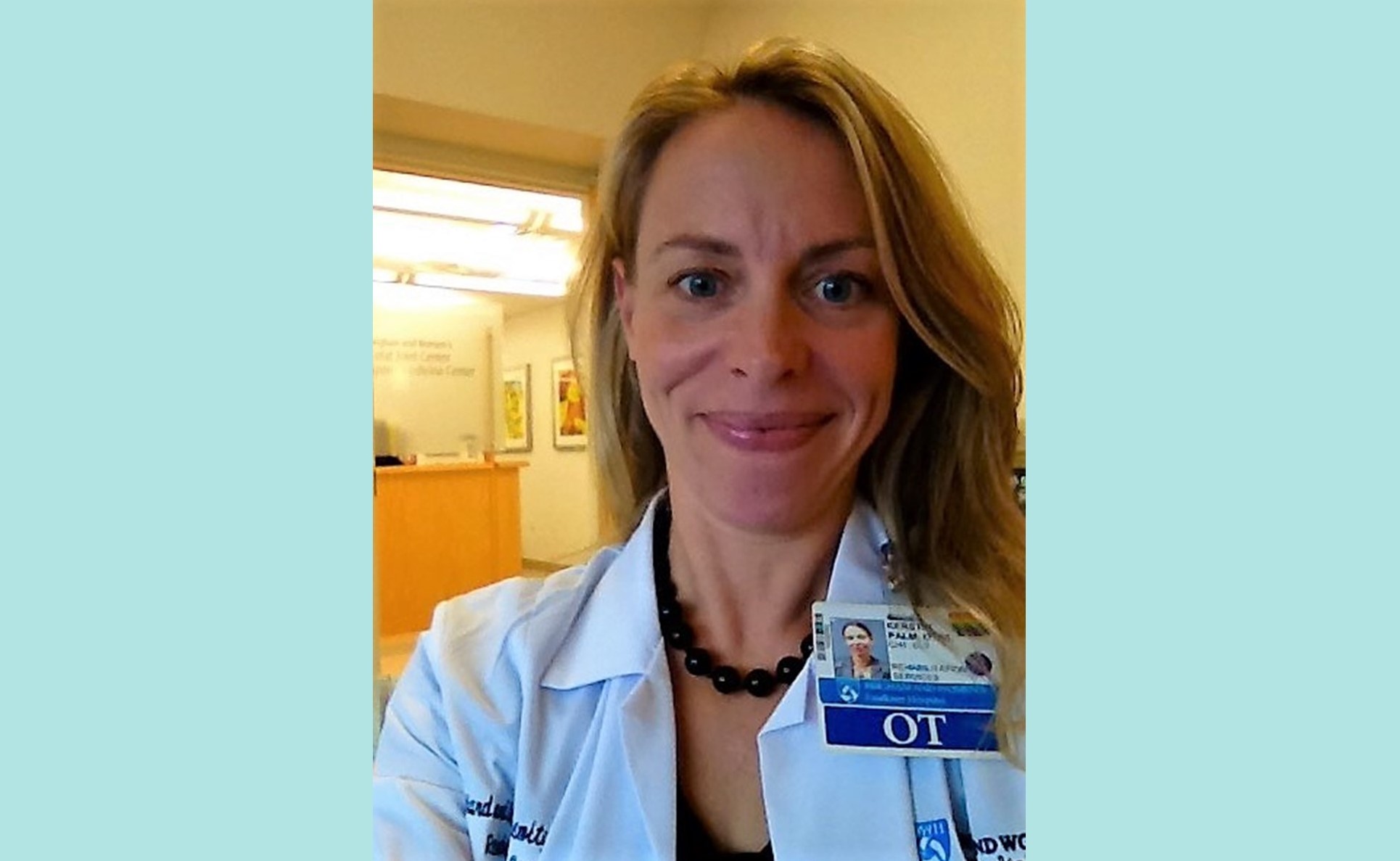Notice of privacy incident at Brigham and Women's Faulkner Hospital Learn More
Header Skipped.
Notice of privacy incident at Brigham and Women's Faulkner Hospital Learn More
Header Skipped.

“I’ve been a hand specialist for a long time. But amputations of the upper extremity are rare so my experience with them was limited,” says Brigham and Women’s Faulkner Hospital Outpatient Rehabilitation Services Manager Kerstin Palm, OTR/L, CHT, CLT, MA.
For that reason, Palm took a pause when she was asked by her colleague, plastic and reconstructive surgeon Matthew Carty, MD, to participate in a clinical research study funded by the Department of Defense.
Carty, along with a team from MIT, pioneered a novel lower limb amputation procedure called the Ewing amputation—a surgery first performed right here at BWFH. Now, the team is investigating whether or not that same procedure can be applied to above- and below-the-elbow amputations to provide patients with more functionality and use of their prosthesis following an arm amputation.
That’s where occupational therapy plays a role. Palm was tasked with designing a protocol for patients before surgery, after surgery and as they learn to use their next-generation prosthesis that would help improve their outcome but also quantify the data needed to prove the procedure’s efficacy.
At first, Palm questioned whether or not she was right for the role, so she set to work doing her research. In addition to scouring a 300-page protocol on amputations in wounded warriors written by the Department of Defense, she traveled to Switzerland to meet with researchers doing similar work and to Walter Reed National Military Medical Center where she got to know their surgical team, occupational therapy team and patients. She even reached out to a researcher in Germany who has developed a tool to quantify how patients use and perceive their prosthetic limbs. “I knew this was going to be a challenge and require significant time and attention, but the opportunity to work on something new that has a meaningful impact on people’s lives and function is an incomparable opportunity and honor,” says Palm.
Alongside Dr. Carty, Palm mapped a new protocol specific to the research study. “The goal of the research protocol is to determine if this surgery is superior in terms of outcomes to traditional amputation surgery. The protocol had to be crafted to capture that data, so it has an extensive number of functional outcome assessments and patient-focused self-assessments,” explains Palm.
What makes the Ewing amputation unique is linking muscle pairs to better enable prosthetic control, preserve limb volume and eliminate neuropathic pain. Because the agonist and antagonist muscles are connected and nerves from the distal extremity are reassigned via targeted muscle reinnervation, it is important to complete targeted exercises before and after surgery to prepare for using new and emerging prosthetic technologies. “Prosthetics have a come a long way, even for traditional upper limb amputation patients, however this procedure opens the door to more advanced and intuitive prosthetic control and by extension from that, more expansive functional outcomes,” says Palm.
While the study is still underway, Palm hopes the team’s work will definitively demonstrate the Ewing amputation’s superiority to traditional amputation. “I met with one patient who was immediately and intuitively so facile with his prosthetic arm that it literally brought tears to my eyes,” she says. “It’s amazing what he could do.”
Similarly, Dr. Carty has been pleased with patients’ results and is grateful to have Palm on the team. “This work is only successful through the collective effort of a group of dedicated individuals. I’m very thankful to have someone as thoughtful, committed and passionate as Kerstin on our team to continue to optimize care for patients with severe limb injuries,” he says.
To learn more about the research study, click here.
Looking for more news from BWFH? Go to News to find articles about health, updates to our programs and services and stories about staff and patients.
Go to News